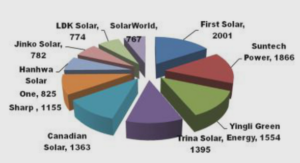Mémoire online preparation of polyurethane foams from hydroxytelechelic oligoisoprenes obtained by controlled degradation of natural rubber, tutoriel & rapport PDF.
CHAPTER 1: INTRODUCTION
Polyurethanes are all around us, playing a vital role in many industries because of their widely ranging mechanical properties and their ability to be relatively easily machined and formed as plastics, foams and elastomers. In particular, urethane materials, such as foams and elastomers, have been found to be well suited for many applications. Automobiles, for instance, contain a number of components, such as cabin interior parts, that comprise urethane foams and elastomers. Urethane foams are also used as carpet backing. Such urethane foams are typically categorized as flexible, semi-rigid, or rigid foams with flexible foams generally being softer, less dense, more pliable, and more subject to structural rebound subsequent to loading than rigid foams.
The production of polyurethane foams is well known in the art. It includes two important reactions. The first one is the reaction between isocyanate groups and hydroxyl groups leading to urethane groups. The most common method of urethane production is via the reaction of a polyol and a diisocyanate, which forms the backbone urethane group. The second reaction is the gas production by the isocyanate groups reaction with water to form amine and carbon dioxide gas (chemical blowing agent) in the form of bubbles. Moreover, a low boiling solvent (physical blowing agent) evaporates as heat is produced during the exothermic reaction and produces bubbles. Both blowing agents assist in creating the size of the void cells in the final foam.
Polyols currently used in the production of urethanes are petrochemical, being generally derived from propylene or ethylene oxides. Polyester polyols and polyether polyols are the most common polyols used in urethane production. For flexible foams, polyester or polyether polyols with molecular weights greater than 2500 g mol-1 are generally used. For semi-rigid foams, polyester or polyether polyols with molecular weights of 2000-6000 g mol while for rigid foams, shorter chain polyols with molecular weights of 200 to 4000 g mol-1 are generally used, are generally used. There is a very wide variety of polyester and polyether polyols available for use, with particular polyols being used to engineer and produce a particular urethane elastomer or foam having desired particular final toughness, durability, density, flexibility, compression set ratios and modulus, and hardness qualities (Kurth et al., 2006).
Use of petrochemicals such as polyester or polyether polyols is disadvantageous for a variety of reasons. As petrochemicals are ultimately derived from petroleum, they are nonrenewable resources. The production of a polyol requires a great deal of energy, as oil must be drilled extracted from the ground, transported to refineries, refined, and otherwise processed to yield the polyol. These required efforts add to the cost of polyols and to the disadvantageous environmental effects of its production. Also, the price of polyols tends to be somewhat unpredictable and tends to be exhausted in the near future.
Also, as the consuming public becomes more aware of environmental issue and exhaustive issue, there are distinct marketing disadvantages to petrochemical based products. Consumer demand for “bio-based” or “green chemistry” products continues to grow. The term “bio-based” or green chemistry” polyols for the purpose of this application is meant to be broadly interpreted to signify all polyols not derived exclusively from non-renewable resources. As a result, it would be most advantageous to replace polyester or polyether polyols, as used in the production of urethane foams and elastomers, with more versatile, renewable, less costly, and more environmentally friendly components (Kurth et al., 2006) Researchers have successfully synthesized PU elastomers using vegetable oil-derived polyols and observed improvements in both thermal stability and oxidation resistance (Javni et al., 2000; Javni et al., 2003; Suresh and Kishanprasad, 2005). The success in incorporating vegetable oil-based polyols in PU elastomer synthesis has generated interest in using the same polyols in PU foams. Foams constitute more than 60% of all PU products (Smith, 2005). The use of vegetable oil derived polyols in foam synthesis is not only desirable but also reducible petroleum components in PU.
…………





